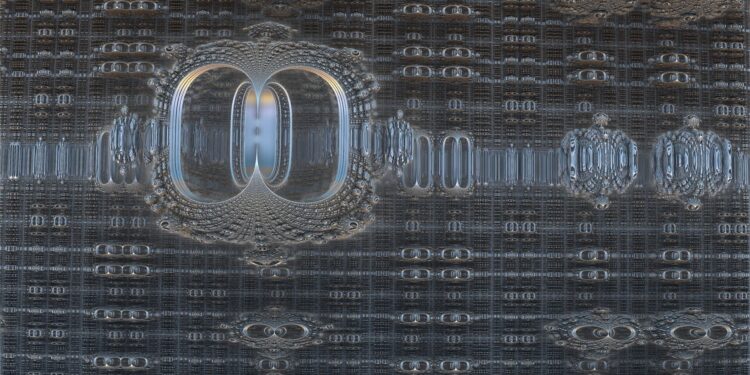Credit: Public domain CC0
Quantum computers have the potential to solve problems far beyond the reach of today’s fastest supervisors. But today’s machines are notoriously fragile. Quantum bits, or “qubits”, which store and processing information is easily disturbed by their environment, leading to errors that accumulate quickly.
One of the most promising approaches to overcome this challenge is topological quantum computer science, which aims to protect quantum information by coding it in the geometric properties of exotic particles called. These particles, which existed in certain two -dimensional materials, should be much more resistant to noise and interference than conventional qubits.
“Among the main candidates to build such a computer, there are any in fact, which are already intensely studied in the laboratories of condensed materials because of their potential realization in exotic systems such as the fractional of the quantum state and topological superconductors,” said Aaron Lauda, professor of mathematics, physics and astronomy Aaron Lauda, Arts, Arts and Science and Study.
“On their own, Anyons cannot carry out all the operations necessary for a quantum computer for general use. The calculations they take care of are based on the` `braiding ”, moving physically, each other to carry out a quantum logic. For Ising Anyons, this braiding allows only a set of limited operations known as Clifford Gates, which does not receive the complete power for a limited universal calculation.”
But in a study published in Nature communicationsA team of mathematicians and physicists led by USC researchers has demonstrated a surprising bypass.
By adding a single new type of Anyon, which was previously thrown into traditional approaches to topological quantum calculation, the team shows that Anys can be made universal, capable of performing any quantum calculation by braiding alone.
The team has nicknamed these “negligent” saved particles, a name that reflects both their neglected status and their new importance. This new Anyon naturally emerges from a wider mathematical framework and provides exactly the missing ingredient necessary to complete the calculation toolbox.
From mathematical waste to quantum treasury
The key lies in a new class of mathematical theories called the theories of non -semisimple topological field (TQFT). These extend the standard “semi-summary” frames that physicists generally use to describe the anchors. Traditional models simplify underlying mathematics by rejecting objects with what is called the “zero quantum trace”, declaring them effectively useless.
“But these thrown objects prove to be the missing piece,” said Lauda. “It’s like finding a treasure in what everyone thought they were mathematical garbage.”
The new framework retains these neglected components and reveals a new type of anyone – negligence – which, when combined with Anyyons, allows a universal calculation using braiding alone. Above all, only one negligence is necessary, and it remains motionless while the calculation is carried out by braiding everything around them.
A house with unstable rooms
The discovery was not without mathematical challenges. The non -semisple frame introduces irregularities that violate unity, a fundamental principle ensuring that quantum mechanics preserve the probability. Most physicists have seen this as a deadly defect.
But Lauda’s team found an elegant bypass solution. They designed their quantum coding to isolate these mathematical irregularities far from the real calculation. “Think about it as designing a quantum computer in a house with unstable rooms,” said Lauda. “Instead of repairing each room, you make sure that your whole calculation is produced in structurally sound areas while keeping the prohibited problem spaces.”
“We have effectively quarantined the strange parts of the theory,” said Lauda. “By carefully designing where quantum information lives, we ensure that it remains in the parts of the theory that behaves correctly, so that the calculation works even if the global structure is mathematically unusual.”
From pure mathematics to quantum reality
The breakthrough illustrates how abstract mathematics can solve concrete engineering problems unexpectedly.
“By adopting mathematical structures that were previously considered useless, we have released a brand new chapter for quantum information sciences,” said Lauda.
Research opens up new directions both in theory and in practice. Mathematically, the team works to extend its framework to other parameter values and to clarify the role of unit in non -semisimple TQFT.
On the experimental side, they aim to identify specific material platforms where stationary negligence could arise and develop protocols that translate their approach based on braiding in achievable quantum operations.
“What is particularly exciting is that this work brings us closer to universal quantum computer science with particles that we already know how to create,” said Lauda.
“Mathematics give a clear target: if the experimentalists can find a way to make this additional Anyon, it could unlock all the power of the Ising systems.”
More information:
Universal quantum calculation using anyons from a non -semisimple topological quantum fields, Nature communications (2025). DOI: 10.1038 / S41467-025-61342-8
Supplied by the University of South California
Quote: The particles thrown nicknamed “negligence” can unlock universal quantum computer (2025, August 5) recovered on August 5, 2025 from
This document is subject to copyright. In addition to any fair program for private or research purposes, no part can be reproduced without written authorization. The content is provided only for information purposes.



